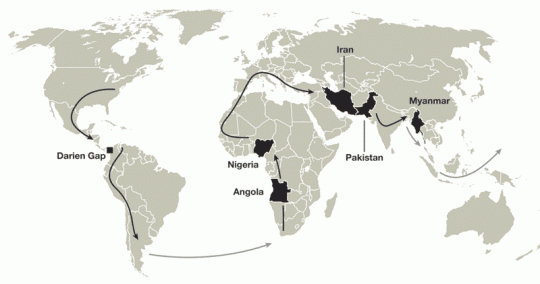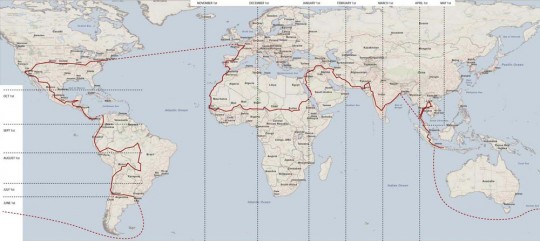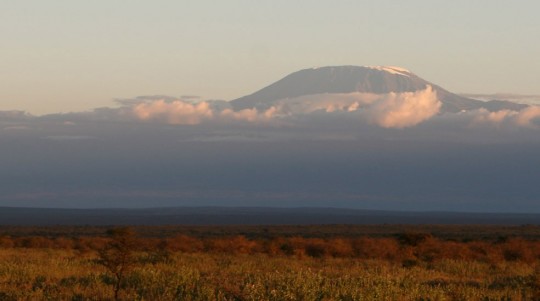
Later in the day, and after I got into Kenya, I was finally able to see the Kilimanjaro, after the clouds unveiled it. Getting out of Tanzania and into Kenya was easy.
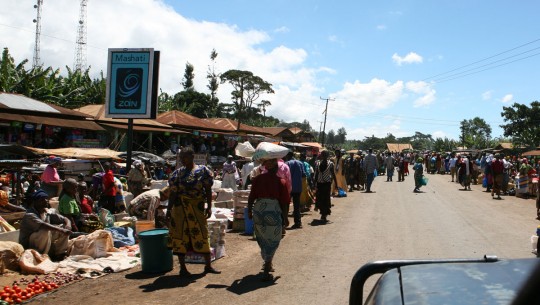
I was first convinced I got lucky when officials asked me for US$25 for my visa, when I projected to spend US$50.
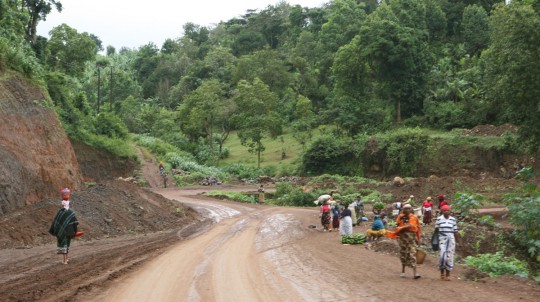
But few minutes later, I found myself paying an extra US$40 for the road tax. I was alone at the border post, but everything is going slowly. I got out of the office around 1 p.m., and saw that the clouds have moved a little, partially uncovering the mountain. I drove away and easily found an ATM at Oloitokitok (Good luck for remembering this name), the first town after the border.
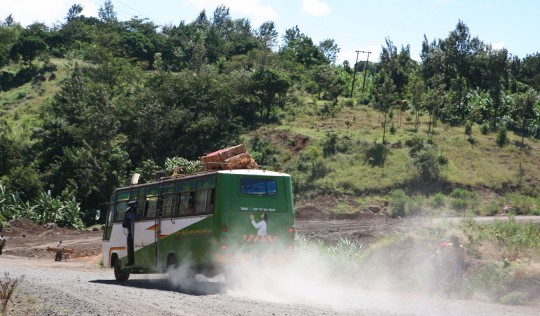
My plan was to go spend at least a night in the Tsavo National Park. Unfortunately, the road being in state of repair, there was no sign and I could not find my way. As a result, I changed my plans, and decided to get to the famous Amboseli national Park. After a bit of time searching, I found a track going there, but when I arrived at the gate, I found out it would cost me US$100 a day to be in the park!
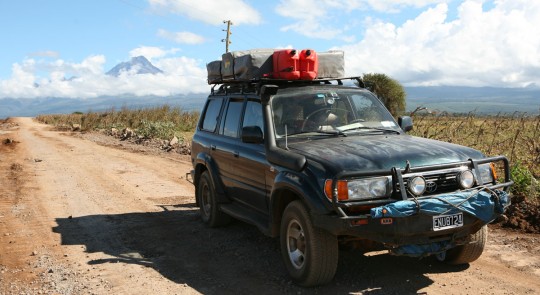
Ridiculous. The cost is similar than in Tanzania. As much as I want to take advantage of my time in Africa, I can’t afford such an expense. Why would it be so much more expensive than in South Africa, or Mozambique? I am pissed at the overpriced fee, and decided to leave at once. At this point, it is already time to find a place to spend the night, and there is not much in the area.
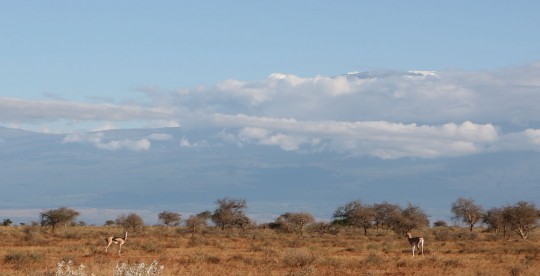
With that in mind, I stop in a small village, and ask if it would be OK to spend the night there. Unfortunately, the men are at a ceremony somewhere else, and women can’t give me the authorization. I continued north. After a while, I spot a sign advertising a nearby camping. I leave the road and discover a place with no water and electricity but few local guys thinking they will become rich soon.
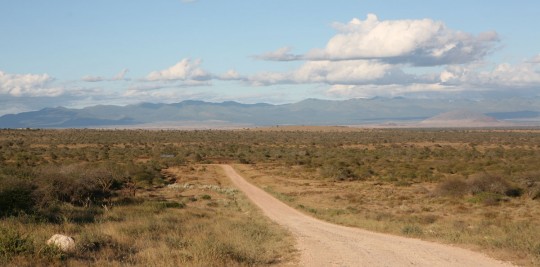
To this effect, they ask me US$40 to spend the night there. Now I am really pissed and tired. Will it be the same everywhere? I leave without a word. I am so upset that I decide to drive all the way to Nairobi, where I know it ill be easier to find a place to rest.
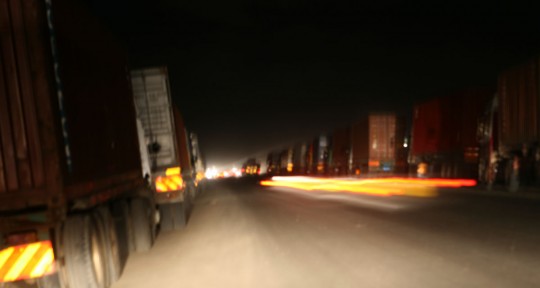
I drive for hours in the night, which is hell with all the slow trucks and crazy drivers always ready to pass with no visibility whatsoever. This is definitely not my lucky day. Fortunately, in Nairobi, I find the excellent Upper Hill Camping (US$6 a night).
I still want to see some wildlife, and project to get out of town again as soon as I can. It is now Sunday morning, and I decide to stay again for the night, and be at the Ethiopian embassy when it opens on Monday. I hear it takes 48 hours to get a visa, which I would spend with giraffes.
I expect this visa quest to be just a formality, but of course, after so long on the road, I should have known better.
The Ethiopian visa is the first one on my whole trip I can’t get directly at the border. It is the first of a long series. I do know that I will have to do some advance work for countries like Saudi Arabia, Iran, Pakistan or India, for example. Some of these visas will be long or tricky to obtain. But who would have imagined that the Ethiopian visa would be trouble? After all, many overlanders use the east road to go through Africa, and the visa is often obtained in Kenya…
But not in the past few weeks. After I get rejected on this Monday morning, I go on the internet, and find out that few other people recently got into the same trouble. As me, they were refused the visa on the ground that they were not Kenyan residents.
I look at other alternatives. There are only two. I can drive northeast to Sudan and cross the whole country. Difficulties would be huge, including bandits on the way, terrible tracks to progress on, and a lot of work to find places to stay and food.
The other option, which I chose to give a try, is to send my new passport via DHL to my parents, so they can apply for me at the Paris embassy. Few hours later, it cost me US$50 to send the passport, application and an I.D. picture to Europe.

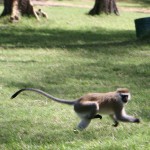
I then spend the afternoon visiting Nairobi, a resolutely modern city. After another night at the Upper Hill camping, I leave in the morning. I figure the paperwork issue will take at least a week to get solved, so I better visit Kenya.
I selected to explore the Rift Valley, which stretches 6,000 km (3,750 mi) from the Middle East to Mozambique. In Kenya, old volcanic peaks line the valley.
Before I leave, I catch a movie and get enough groceries for the next few days. Then, I drive 100 km (63 mi) to Lake Naivasha
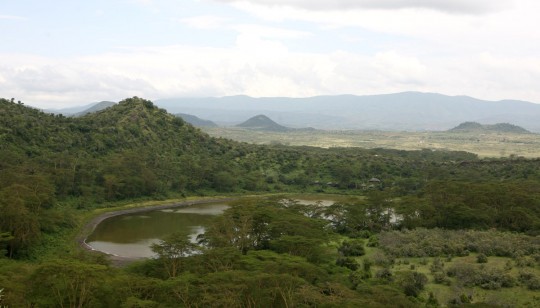
I sleep at the not-so-charming Fishermen Camp (US$ 6), on the south shore. Around noon the next day, I get to the next place on my list. A small park, set around a volcano crater which would be my home for few days.
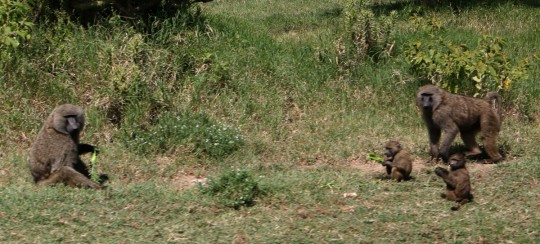
The place is a pearl. I projected originally to spend only one night, but stay there for four days. There, I am able to see a lot of wildlife, and walk around the rim, which is not permitted in National Parks.
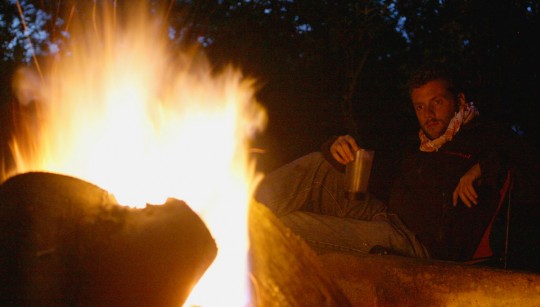
I can’t recommend enough this place. Entrance is US$10, and every night at the camp cost US$6. I am the only camper there, and every night, someone comes to build a fire.
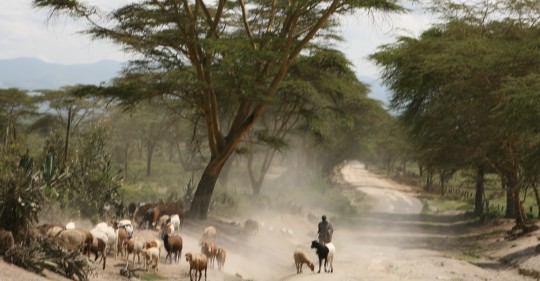
During the day, I walk around the crater, and get lost in the nature. At the end of the afternoon, it invariably rains for few hours, which I spend in the tent reading. Then I cook.
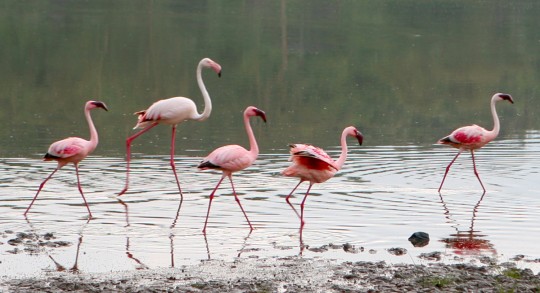
On Thursday, I get a quick access to the internet, so I can read an email my mother sent me. She thinks she will be able to send me back the passport with the visa on Friday. This means I could get it on Monday. Let’s hope…
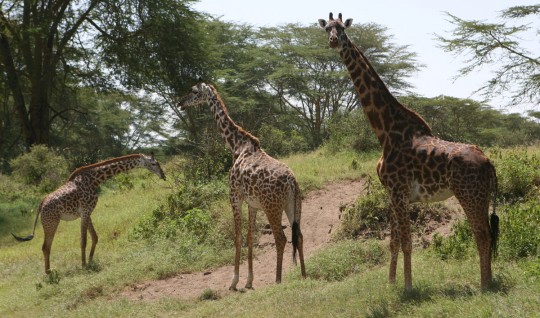
On Saturday I leave the camp, and advance further north. In the highlands, I get to Nyahururu, an ugly town close to a cascade I want to see, the Thomson’s Falls.

I spend the night there, and do a short trek to the bottom of the falls. It is very nice, but there are too much people everywhere trying to sell you things, wash you car, and take picture of you with some tribe members. This drives me crazy, and after my little walk, I am back in the truck, taking the direction of Nairobi. I plan to change the oil of the truck on Monday, and if I get my papers, leave the city immediately after. The next week will be devoted to what I believe will be the hardest road so far.
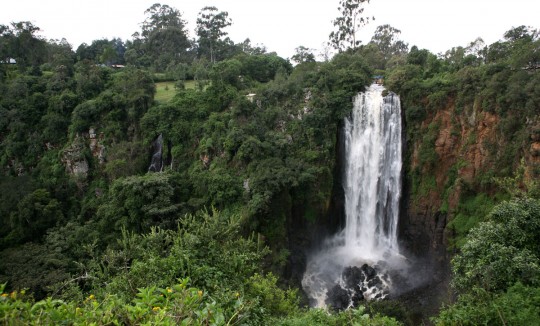
From Isiolo, Kenya to the Ethiopian border, lies the worst dirt road you can imagine. At least 48 hours of inferno. The road used to be dangerous as well because of thieves, and vehicles form a convoy before leaving Isiolo, but I get conflicting reports and I am not sure if it is or not required anymore.
NOTE: I am looking for residents of Saudi Arabia and Iran who could help me to sponsor upcoming visas. Please send me an email!

